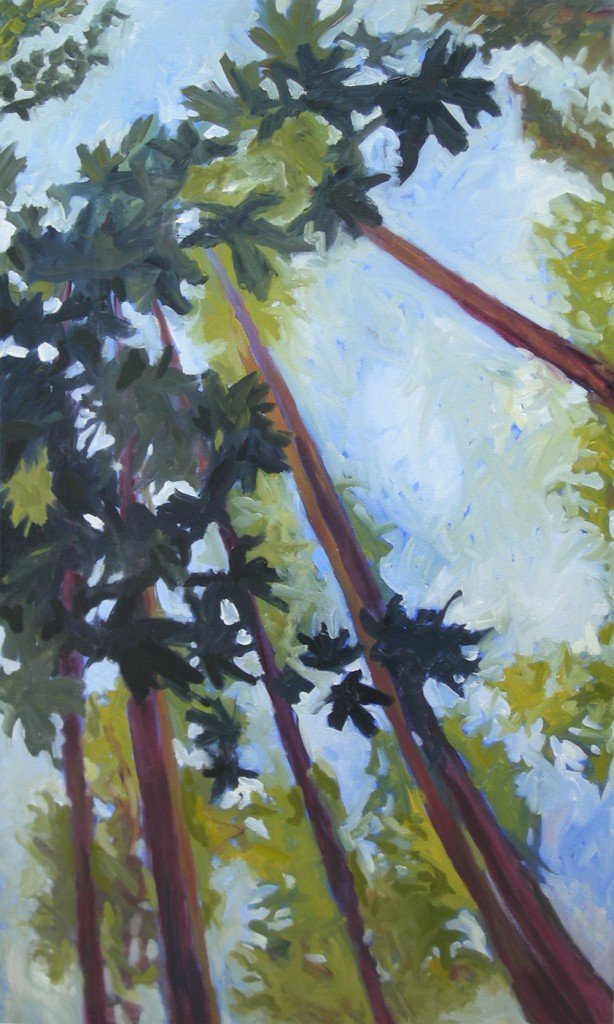One of the best reasons to make a painting is the physicality of the paint itself. It smushes under our palette knife, and dances out from under our brushes. One day in art school, I learned to pay attention to not just the shape that I was making, but the edges of that mark. The lessons I learned that day is what I am going to cover in this post.
Awareness
The first step to creating great edges that benefit your painting is being aware to even pay attention to them. Edges visually occur when you transition from one color on your brush to another, when you change what kind of brushstrokes you are using, when you add another material, or when you create a texture change.
In the painting above, I played with soft and harder edges. Working wet-on-wet I was able to mix the sky into the leaves when I desired. Soft edges at some points, and sharper edges on the darker leaves allowed me to help achieve the look I was going for.
Edges and the Foreground
Edges in the foreground of a painting are typically a bit more physical (having a 3-D quality to them), and are harder (more defined, and painted quicker). This effect softens as the painter moves into the middle and backgrounds. This is because up close we can see more detail – and one of the ways that we portray that detail is in the edges of the paint.
Pay attention to which edge is in front. Does it make sense in the physical world? Which ever edge is on top, that subject is in front of the other. You can also play with that effect. Here I blended the sky and the leaves together on purpose. Creating juicy edges that shifted back and forth about what was in front. Don’t forget, all these rules in painting are made to be learned so you can break them on purpose when you want to!
Sharp Edges
Just as with contrast, the sharpest edges can be placed at the place you want the viewer to focus on the most. Edges are another form of contrast, this time a contrast in the physicality.
Soft Edges
Many artists adore soft edges. They help hide wrinkles in portraits, they create amazing tonal varieties in a tonal painting. John Singer Sargent was a master of edges in his paintings, especially his portraits.

Look at the edge of the chair in the Sargent painting. See how the edge goes into a soft focus, then a sharper and more contrasted edge? There are so many beautiful edges in the work that transition as they move around. Look at the purple sash, and the sharp shadows, and then where does it go soft? How does that add to the painting? What would the effect have been if it was sharp where it was soft? Probably, it would distract your attention by keeping your eye there longer than he wanted.
Common Mistake – Edges Not Touching
Oh my goodness – this happens so easily. We are painting, and then we look down and everything is slightly separated from the next painted bit, a good millimeter or two apart – as if they are allergic to each other. There really is no other solution but to extend those paint areas out until they touch. Be careful doing this as they can start to looked fussed with at this point. I find that this happens to me when I am working from a source photo and getting enrapt with how something is rendered. I start paying so much attention to angles, lines, and shapes that I miss the mark, literally, with the paint.
Tell me in the comments, have you considered edges before? Do you have a favorite edge moment in a painting?

